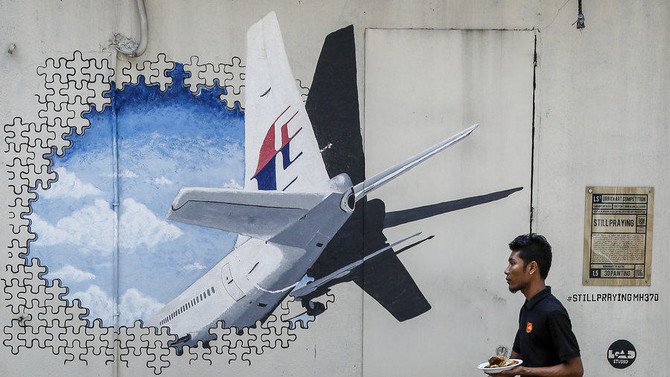The director of a seabed hunt for Malaysia Airlines Flight 370 on Tuesday disagreed with a new book’s conclusion that the pilot likely flew the plane beyond the search area to deliberately sink it in unexplored depths of the Indian Ocean.
The Australian Transport Safety Bureau believes the airliner mostly likely ran out of fuel and crashed after flying far off course en route from Kuala Lumpur, Malaysia, to Beijing on March 8, 2014. It believes all 239 passengers and crew on board were likely long dead inside a depressurized cabin and cockpit.
Search director Peter Foley, who coordinated the search on Malaysia’s behalf, was quizzed by a Senate committee on theories in Canadian air crash investigator Larry Vance’s new book “MH370: Mystery Solved.”
The book argues that two wing flaps found on islands off Africa in 2015 and 2016 point to pilot Zaharie Ahmad Shah performing a controlled ditching outside the 120,000 square kilometers (46,000 square miles) that were scoured by sonar in a 198 million Australian dollar ($150 million) search that ended in January last year. It says Shah’s aim was to keep the plane largely intact so it would disappear as completely as possible in the remote southern ocean.
Foley, who said he has read the book, pointed to evidence that the plane was not under anyone’s control when it hit the water.
He said analysis of the satellite transmissions of the flight’s final moments showed the jet was in a fast and accelerating descent at the end. Debris from within the plane’s interior found washed up on the west coast of the Indian Ocean suggested significant energy on impact, Foley said.
“If it was being controlled at the end, it wasn’t very successfully being controlled,” Foley said. “The flaps weren’t deployed,” he added.
The book argues that the two recovered flaps show evidence that they had been deployed as the pilot slowed the plane for a gentle landing on water.
Foley said an analysis at the bureau’s headquarters in Canberra of the second flap found on the island of Pemba, off the coast of Tanzania, in June 2016 determined it was “probably not deployed.”
But French authorities prevented an Australian analyst from “doing anything meaningful in terms of analysis” of the first flap found. That flap, known as a flaperon, was found on the French island of Reunion in July 2015. French authorities are holding the flaperon as evidence for a potential criminal prosecution.
Foley said his bureau could not conclude that the flaperon had lost its trailing edge because it was deployed when the plane hit the water.
While the bureau has not said who had initially flown the plane off course, Foley said “it’s absolutely evident” that someone had, ruling out some mechanical or electrical malfunction.
Texas-based technology company Ocean Infinity renewed the search this year on the basis that Malaysia would pay it up $70 million if it could find the wreckage or the plane’s black boxes.
Foley said he still hopes the search will succeed within weeks .
“If they’re not, of course, that would be a great sadness for all of us,” he said.
(AP)











